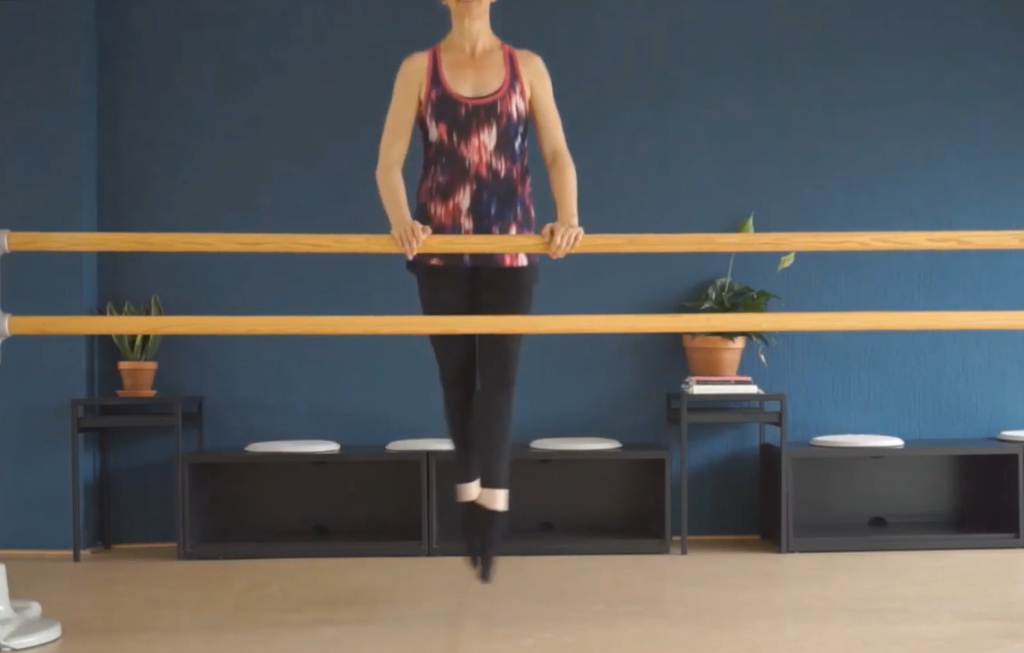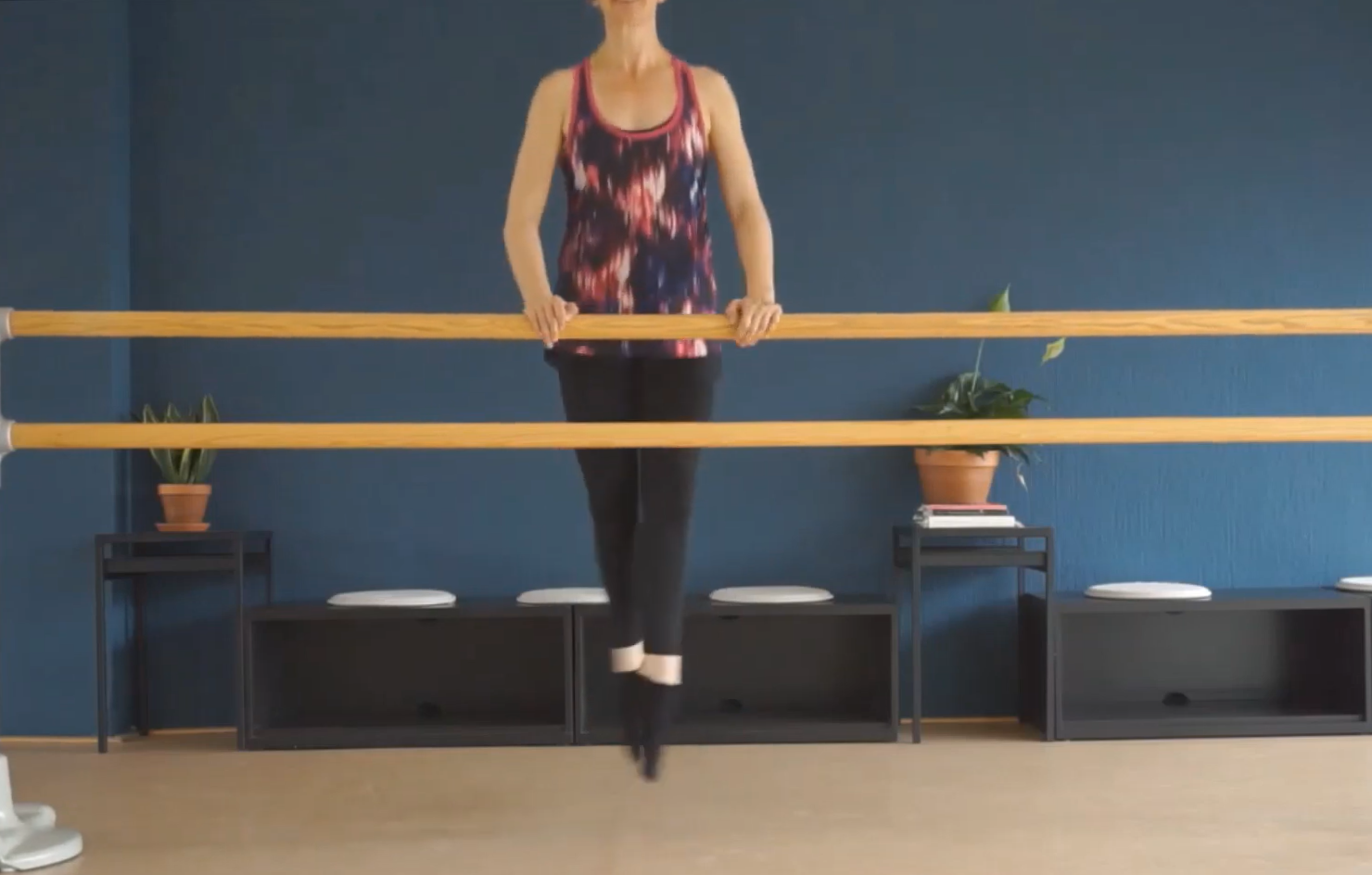I’m bringing you a ballet concept today that is so fun to watch and also to do, batterie or beats of the legs which appear in sparkling variations and jumping or allegro steps.
For more on the various ways dancers move from place to place, you may be interested in the Do the Locomotion / Walk Like a Dancer blog, and for more on the basic types of jumps that exist in ballet and other dance forms (with or without beats), check out my Arts of Allegro blog.
The jumps are taught sequentially, building on our foundation of ballet jumping technique, which will begin with simple standing barre exercises and centre work, as well as specific foot, ankle, leg, and core training. More resources for preparing for and improving jumping are linked at the end of this article.
As we advance our technique and performance practice, batterie becomes an exciting addition to our allegro options. It captures the exuberance, joy, and power of certain characters and situations and can be exhilarating as a dancer and audience member.
Introduction to Batterie
In the classic text of Russian technique Basic Principles of Classical Ballet, pedagogue Agrippina Vaganova defines beating technique like so:
“Beats, the general French for which is batterie, are steps in which one leg is beaten against the other. Beats bring into ballet the element of brilliance, virtuosity, and therefore the execution of them does not allow any carelessness, approximation or simplification, or they would lose their raison d’être. In the practice of beats one must adhere to the following rules necessary for a sharp and brilliant beat. During the beat both legs must be equally well extended, one should never beat with one leg while the other is in a passive state. Before each beat one must not forget to open the legs slightly, so as to get a sharp and clear-cut beat. In this manner, when a beat is done from the 5th position at the beginning of the jump, the legs must be slightly opened to the sides. If you don’t follow this rule, you’ll get a fuzzy smear which will look more like an obstruction to the dance than a virtuoso pas.” (p. 102)
Eliza Gaynor Minden echoes this sentiment in her description of royale: “Known as changement battu in the English system, royale is most often a changement with a beat at the beginning. Getting it right, so it doesn’t look like a sticky changement, is actually more difficult than entrechat quatre because it requires opening the legs to a small but clear second position en l’air before beating.” (_The Ballet Companion_ p.166-7)
Vaganova goes on to opine that as such jumping techniques are taught they should not be watered down: “Beats should not be simplified but, on the contrary, practised in their most complex form. For instance, small beats like royal, entrechat-trois, -quatre, -cinq, should be done close to the floor; this will force you to cross the legs very quickly with a short, sharp movement. This is much more difficult, but there is more compactness, energy, and brilliance in such beat. If these small beats are done during a big jump, high in the air, you have enough time to do the beats, but the performance loses brilliance.” (_Basic Principles of Classical Ballet_ p.102)
“There are three classifications of beats: pas battus, entrechats, and brisés,” argues Vaganova, so let’s look at how these jumps are taught in Russian and Cecchetti techniques as well as in America. (_Basic Principles of Classical Ballet_ p.102)
Pas Battus
Eliza Gaynor Minden describes battu in The Ballet Companion: “To perform a step ‘battu’ you ‘beat’ your thighs: crisscross your legs in the air so they switch places. Certain steps don’t switch feet: you separate your legs just enough to smartly close and open them again, producing the effect of clapping your legs as you might clap your hands. It’s really the thighs, not the ankles, that beat.” (p.166, emphasis mine)
It’s amazing how versatile batterie can be, in fact according to Gaynor Minden, “Almost any jump can be performed battu; additionally some steps–such as brisés, cabrioles, and entrechats–are beats by definition.” (_The Ballet Companion_ p.166)
“Any step embellished with a beat is called pas battu,” clarifies Vaganova, “When the pupils begin to do the more difficult pas allegro, these pas can be done with a beat; for example, saut de basque, which is very difficult, jeté en tournant with a beat, which is usually done by men, etc.” (_Basic Principles of Classical Ballet_ p.102)
There is a method to approaching batterie, and Vaganova suggests that “It is easier to begin the study of beats with échappé, and then work on assemblé and jeté.” (_Basic Principles of Classical Ballet_ p.103) Indeed, this is the order that I share jumps which beat the legs: having established basic strength and coordination through barre and centrework, we learn basic jumping technique landing on two feet and then one foot, then progress to royale, échappé battu, then assemblé and jeté battu and further entrechats.

Varieties of Entrechats
Batterie have various origin stories, some unverifyable. According to Gaynor Minden, “Entrechats begin with the relatively simple royale. Louis XIV is said to have invented this step in his attempts to master entrechat quatre. But this is disputed, and some maintain that Louis’s royale was actually an entrechat cinq.” (_The Ballet Companion_ p.166-7)
Gaynor Minden explains the numbering system of entrechats: “As the numbers grow bigger the steps become harder. In entrechat quatre, or entrechat four, the legs cross twice in the air so you land in the same position you started from. Each crossing of the legs raises the number by two; an entrechat six crosses the legs three times in midair. The front leg goes to the back, then returns front, then ends in back. The terminology is not so mysterious if you think of it this way: each opening of the legs counts as one, and each closing of the legs counts as one.” (_The Ballet Companion_ p.167)
There are endless variations of batterie and entrechats. For examples, Gaynor Minden describes: “Entrechats can travel (an entrechat de volée, ‘flying’), or land on one foot with the other in sur le cou-de-pied. In most schools even-numbered entrechats land on two legs, odd on one: an entrechat trois is a royale that ends with one leg sur le cou-de-pied front or back, an entrechat cinq is an entrechat quatre landing the same way.” (_The Ballet Companion_ p.166)
Entrechat Quatre
The Cecchetti Method of Classical Ballet provides a detailed description of Entrechat Quatre, an extremely common ballet beat:
“Stand erect in the center of the room and face 5, with the head upright, the feet in fifth position, right foot front, and the arms in fifth position en bas.
I. Demi-pliez and, with a little spring slightly upwards into the air off both feet.
While the body is in the air–
Simultaneously interchange the feet–allowing the knees to bend–and beat the feet one and against the other.
At the moment of alighting–
Simultaneously interchange the feet and come to the ground–allowing the knees to bend–with the feet in the fifth position, right foot front.” (p.213)
Further clarity comes from several footnotes. In Entrechat Quatre footnote 2 the activity of both legs is stipulated, “That is: as the left foot passes in front of the right foot, the right foot passes behind the left foot.” (_The Cecchetti Method of Classical Ballet_ p.213)
In Entrechat Quatre footnote 3 more attention is given to where the legs beat: “In the execution of entrechats, each foot must beat one against the other from the base of the calf downwards. If the heels are forced well outwards and the insteps are well stretched the movement is not difficult to acquire.” (_The Cecchetti Method of Classical Ballet_ p.213) Although this manual specifies that the calf and below beat, I teach along the lines of Gaynor Minden, where we visualize the thighs, even the thigh bones, crossing to get a strong and full beat of the whole leg.
Cabriole & Brisé
Vaganova teaches that “There are two kinds of brisé: (1) those that end in 5th position, and (2) those that end on one foot dessus or dessous.” (_Basic Principles of Classical Ballet_ p.106)
Gaynor Minden describes the shape and action of these movements: “Cabriole and brisé beat the legs at an angle to the body. Cabrioles can be done to the front, side, or back, with the angle of the legs ranging from very slight to above 90 degrees. Brisé is a traveling variant of assemble battu. The effect of brisés is amplified when they are performed one after the other in quick succession. done alternately from front to back, the step becomes the spectacular brisé volé.” (_The Ballet Companion_ p.166)
Preparing for Jumps & Batterie
Can’t wait to get started, but not sure where to begin your batterie training? I recommend starting with Conditioning and Cross Training, such as Foot and leg strengthening, & core work, then a Dance Warmup and Ballet Barre training with an assortment of Battements (brushes, kicks), including:
- Battements Tendu (Tempting Tendus)
- Battements Degagé (Delectable Dégagé )
- Petite Battement (Plucky Petit Battement)
- Battements Frappé (Frothy Frappé & Jeté)
- Grand Battements, Balancoire (Ebullient Battement & Passé)
Then, as you grow stronger and more stable, you can incorporate jumps such as Saucy Prances & Sautés, Piquant Springing Prances, Frothy Frappé & Jeté, & Gorgeous Glissade + Assemblé Jumps, then integrate the batterie described in this article.
Questions for Reflection
- Have you tried petit battement, changement royale or other leg beats in ballet?
- What do you enjoy or find challenging about jumps or beats in dance?
- Do you enjoy seeing this sort of virtuosity in performance (in certain roles), or are there other movements that you find more impressive or enjoyable?
Blythe Stephens, MFA
she/her or they/them
A Blythe Coach: ablythecoach.com
move through life with balance, grace, & power
DISCLAIMER: A Blythe Coach recommends that you consult your physician regarding the applicability of any recommendations and follow all safety instructions before beginning any exercise program. When participating in any exercise or exercise program, there is the possibility of physical injury. If you engage in this exercise or exercise program, you agree that you do so at your own risk, are voluntarily participating in these activities, assume all risk of injury to yourself.
References
_The Cecchetti Method of Classical Ballet: Theory and Technique_ by Cyril W. Beaumont and Stanislas Idzikowski
_The Ballet Companion: A Dancer’s Guide to the Technique, Traditions, and Joys of Ballet_ by Eliza Gaynor Minden
_Basic Principles of Classical Ballet: Russian Ballet Technique_ by Agrippina Vaganova

